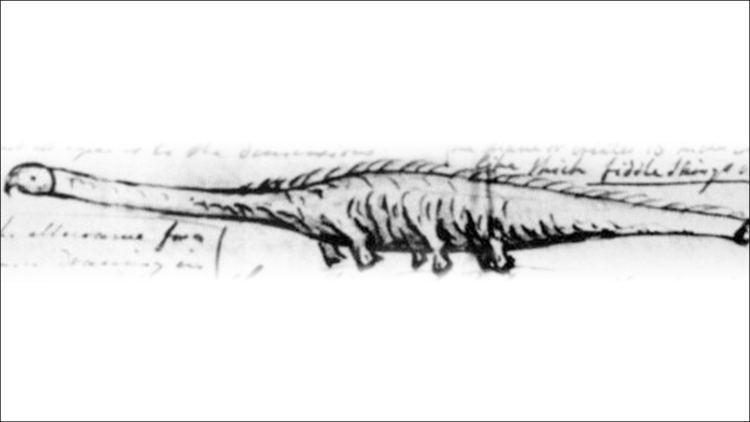
The Stronsay Beast was a large carcass or globster that washed ashore on the island of Stronsay (at the time spelled Stronsa), in the Orkney Islands, Scotland, after a storm on 25 September 1808. The carcass measured 55 ft (16.8 m) in length, but as part of the tail was apparently missing, it was estimated the animal was longer than that. The Natural History Society (Wernerian Society) of Edinburgh could not identify the carcass and decided it was a new species, probably a sea serpent. The Scottish anatomist John Barclay gave it the scientific name Halsydrus pontoppidani (Pontoppidan's sea-snake) in honor of Erik Pontoppidan, who described sea serpents in a work published half a century before. Later, the anatomist Sir Everard Home in London dismissed the measurement, declaring it must have been around 36 ft (11 m), and deemed it to be a decayed basking shark (basking sharks can take on a 'pseudo plesiosaur' appearance during decomposition). In 1849, Scottish professor John Goodsir in Edinburgh came to the same conclusion. The largest reliably recorded basking shark was 40 ft (12.2 m) in length, so at 55 ft, the Stronsay beast still constitutes something of a cryptozoological enigma.
The Stronsay Beast (known locally as the Stronsay monster) was measured by three witnesses (one was a carpenter and the other two were farmers). It was 4 ft (1.2 m) wide and had a circumference of about 10 ft (3.1 m). It had three pairs of 'paws' or 'wings'. Its skin was smooth when stroked head to tail and rough when stroked tail to head. Its fins were edged with bristles and it had a 'mane' of bristles all down its back. The bristles glowed in the dark when wet. Its stomach contents were red. Full transcripts of the witness testimony can be found in the Wernerian Society Notes Vol. I (1808–10), which are held in the National Museum of Scotland and can be viewed by appointment.
Bernard Heuvelmans researched the evidence in his book In the Wake of Sea Serpents and suggested the Stronsay beast may indeed have been an unusually large basking shark. The drawings of the Stronsay beast's decayed carcass are similar in shape and size to the popular image of the Loch Ness Monster, although it was criticized by the eyewitnesses as not matching their description in all regards (Memoirs of the Wernerian Natural History Society, Vol L 1808-10). The third pair of appendages could be a male shark's "claspers", but male sharks are generally smaller than the females of the same species. The creature's remains were cartilage, not bone, so it could not have been an oarfish nor any other animal with a bone skeleton (Memoirs of the Wernerian Natural History Society, Vol L 1808-10).
